Mokwheel’s made a name for themselves in the fat tire e-bike space over the past couple years. Their Basalt and the full-suspension Obsidian both landed solid reviews from us, capable bikes packed with power, though they were built around hub motors. They proved Mokwheel knew how to engineer a fat tire e-bike that could actually perform.
But here’s the thing: hub motors are fine for cruising and light terrain, but they’ve got limitations. So Mokwheel looked at what they built and decided to go all-in on their next move. Enter the Onyx, still a full-suspension fat tire beast, still compatible with their solar panels and power inverter accessories that made those earlier models so intriguing, but this time they swapped the hub motor for a mid-drive setup. And they didn’t do it halfway. We’re talking 1300 watts peak power and 210Nm of torque, that’s genuine grunt that actually makes a difference when you’re climbing or dealing with real terrain.
After spending a week putting the Onyx through its paces, I’ve figured out exactly where this bike shines and where it deserves some honest criticism. Let’s dig in.
My Experience Riding The Mokwheel Onyx E-Bike

The Onyx arrived at our office in that signature Mokwheel blue-black, and it looks right in line with the rest of their power station lineup, same aesthetic language, just scaled up appropriately. The larger frame tubes are there to handle the bigger battery, but it’s not like they redesigned the look from scratch. The new stem display is clean and nestled nicely into an adjustable mount so you can dial in your viewing angle. Add those chunky 26×4″ fat tires and yeah, this thing looks ready for action straight out of the box.
Fit-wise, at 5’11” I found the bike comfortable right away. Now, there’s a quirk worth mentioning: that hidden manual adjustable seatpost has a pretty limited range compared to traditional posts. It’s not Mokwheel being lazy though, there’s rear suspension linkage running through the seat tube about 6 inches below the post opening, which severely limits how much room they had to work with. So the dropper-style post is really a compromise born out of engineering necessity, part dropper for adjustability, part MTB-inspired design. It works fine once you understand why it’s there, and I had zero complaints during my week.
The motor power was the real story. At low assist levels it’s reserved, intentionally so, I think, to protect the drivetrain from the abuse a powerful mid-drive can dish out if left unchecked. But ramp it up and this thing chews through hills with genuine confidence. Nearly every grade I threw at it got demolished without hesitation, and that’s the fun part about 210Nm of torque.
There’s a shift sensor that cuts motor power during gear changes, smart engineering to reduce stress on mid-drive components during shifts. But there’s a catch: that pause feels long, maybe a full second of power cutoff when the actual shift itself is a split second. It’s doing the right thing for component longevity, but you notice it.
In terms of how the motor performs, Mokwheel tucked into the settings the “intensity levels 1-5”, separate from your standard PAS 1-5. You access them by holding the left and right arrows on the control pad for a few seconds, and they adjust overall motor response and aggression. The bike ships at intensity level 3, right down the middle. Drop to lower levels and it’s perfect for new riders or anyone not chasing speed. Crank it to 5 and you get the full motor personality. But even at level 5, there’s still that reserved off-the-line acceleration, they’ve protected the drivetrain against sudden motor dump right from a standstill, which sounds smart in theory and plays out even better in practice. Most riders don’t think about how sensitive mid-drive components are to aggressive power delivery, and this approach prevents you from cooking your chain or cassette in a few months of spirited riding.
Around town the Onyx is genuinely fun. That full suspension and fat tire combo makes the bike feel like a big old Cadillac floating down the street, smooth, floaty, confidence-inspiring. The dual crown fork does limit your turning radius a bit, and yeah, you’re aware you’re steering something substantial, but it just adds to that planted feeling.
Off-road is where things get interesting.
The Shimano CUES 10-speed rear derailleur is a solid choice, noticeably better chain tension than the cheaper Tourney or Altus options you see on other bikes in this category. That said, there’s a quirk that popped up consistently, when climbing on chunky gravel or even going fast on flat offroad sections, big bumps would trigger the shift sensor and cut power momentarily. I’d hear the derailleur bounce and lose assist for about a second, then power would come back. This happened even when I wasn’t shifting, just holding throttle or pedal assist full blast on bumpy terrain. I’m not sure if it’s the trigger shifter or something about how the CUES RD responds to impacts, but the effect was consistent enough to notice. It’s a small irritating bummer on technical terrain.
Overall the ride is dialed. Around town it’s fun, fast, and comfortable. Off-road it’s absolutely capable, but that shift sensor seems to need some tuning, it’s getting triggered too easily on bumpy routes and cutting power when you don’t want it to. That’s the kind of thing a firmware update could potentially address, but as tested, it’s a legitimate quirk worth knowing about.
Range
Estimated Range (from Mokwheel)
- Up to 65 miles
Real World Range Test Results:
- Minimum PAS Range Test: 105 miles
- MAximum PAS Range Test: 44 miles
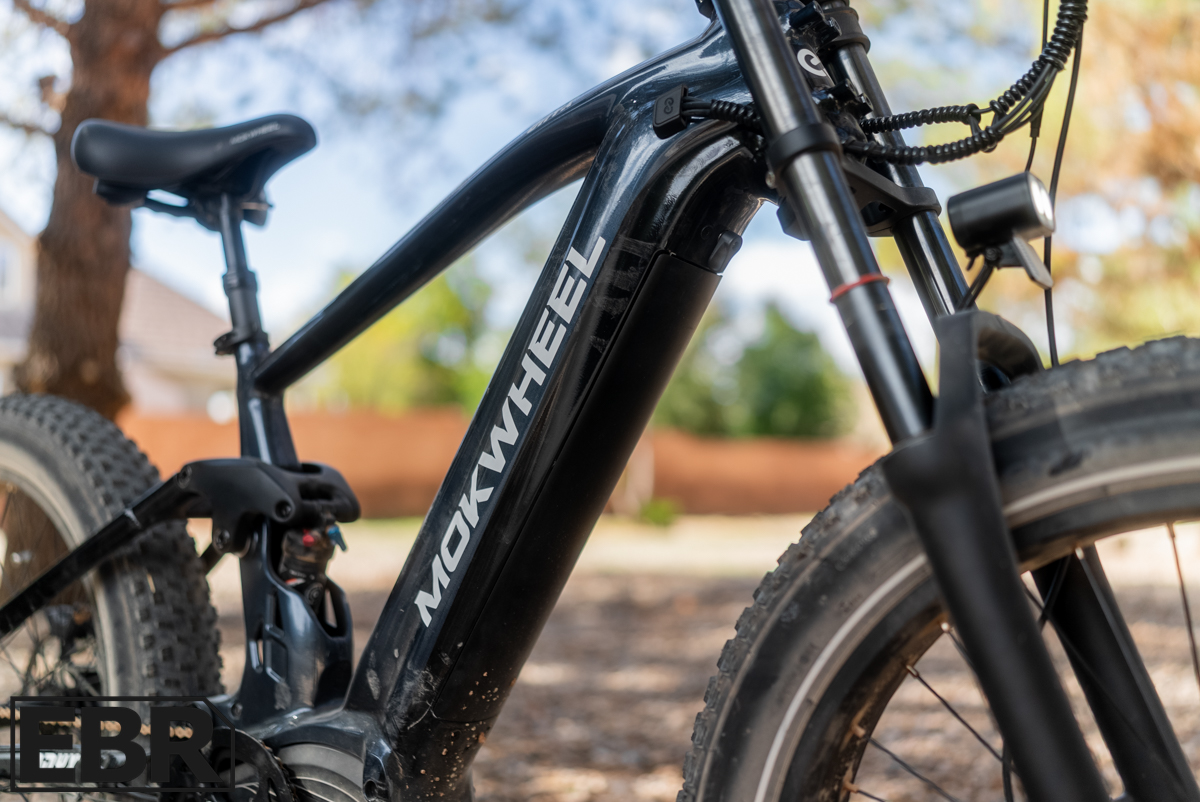
Mokwheel claims the Onyx will get you 60 to 80 miles on a charge, which seems pretty reasonable for a 941Wh battery paired with a 210Nm torque motor. But we wanted to actually test that, so we took the Onyx out and ran it through our range gauntlet. We hit it twice, once in PAS 1 (barely any assist) and once cranked to PAS 5 (full send). Both tests were on relatively flat terrain, so we weren’t fighting gravity the whole way.
Here’s where it got interesting. At PAS 1, we got 105 miles out of it. That’s not a typo, we absolutely smoked the advertised range. At PAS 5, we pulled 44 miles, which makes sense because the motor’s working overtime. The gap between those two numbers is actually the real takeaway here.
Mid-drive motors are just more efficient than hub motors. When you’re pedaling, you’re actually helping move the bike instead of the motor doing all the work solo. It sounds obvious, but it makes a real difference in battery life. That’s why the Onyx surprised us, we honestly didn’t expect to beat Mokwheel’s range estimate by that much on a flat bike path.
Now, real trail riding is a different animal. Rough terrain, climbs, loose surfaces, all that stuff eats battery faster than a smooth path. But the Onyx’s efficiency numbers suggest you’ll still hit that 60-80 mile range in mixed offroad conditions, especially if you’re smart about which PAS level you’re using and putting some pedal power in yourself. For an adventure fat tire e-bike, that’s solid range.
Power (Motor & Battery)
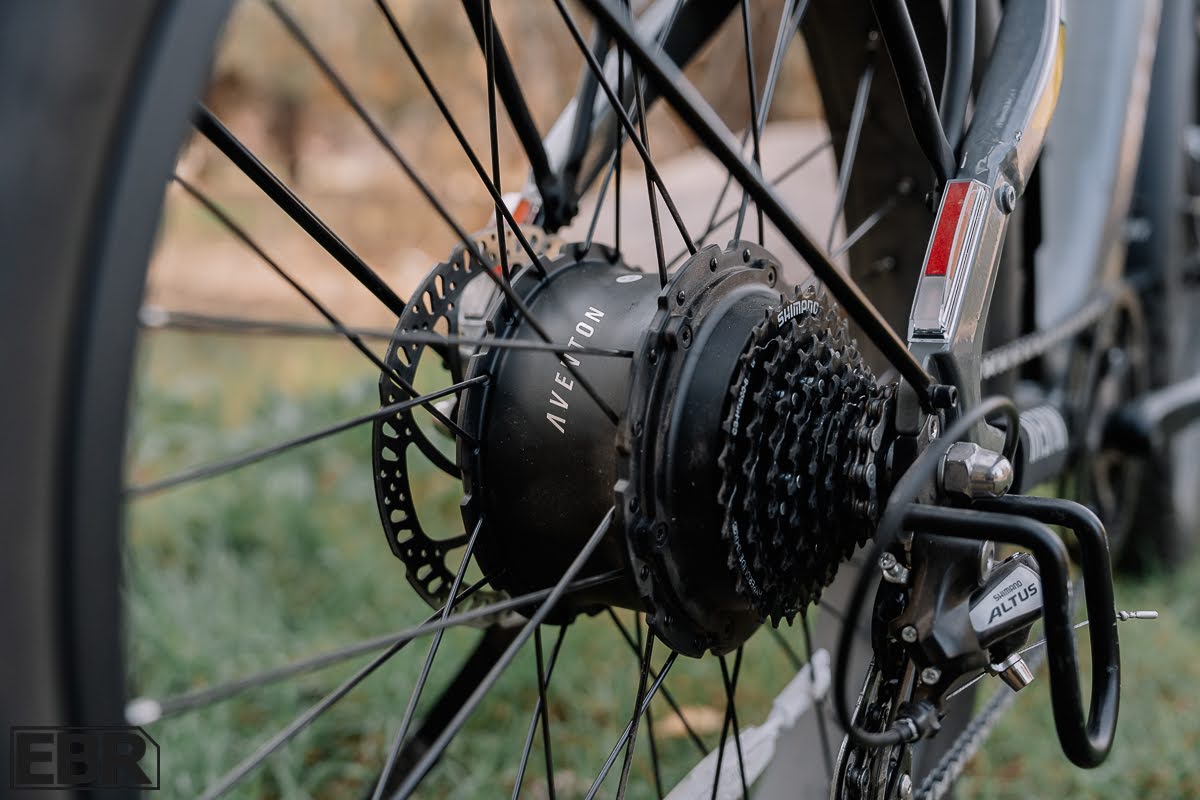
The Onyx is powered by a TruckRun mid-drive motor that’s rated at 750W nominal with a 1300W peak output and 210Nm of torque. That’s a healthy amount of power, and it shows when you’re climbing or dealing with real terrain. The motor uses both a torque and cadence sensor, which gives it a more natural, responsive feel compared to pure cadence-only systems. You can run it in PAS 1 through 5, and Mokwheel lets you dial that down to 3 levels if you prefer fewer options. It’s a nice bit of flexibility depending on your riding style.
What’s interesting is how Mokwheel programmed the power delivery. The motor is legitimately powerful, but it’s tuned to hold back a bit off the launch in lower PAS levels. That’s actually smart because it keeps the torque spike controlled and protects the drivetrain from unnecessary stress. You won’t feel like the bike is babying you, but you also won’t get that jarring surge that can wear components faster. It’s a solid balance between capability and longevity.
The battery is a 941Wh pack (48V, 19.6Ah) built to UL 2271 standards and weighs 10.9 lbs. It’s housed internally in the frame, which keeps the look clean and protects it from the elements. The included charger is advertised as a 3A fast charger, but here’s the thing. If you actually check the back of the charger, it’s a 2.6A unit. It’s not a huge deal in the real world, but it’s worth knowing if you’re planning on frequent charges between rides. Either way, combined with that mid-drive efficiency we saw in our range testing, this battery setup gives the Onyx some genuinely impressive longevity on a single charge.
Components
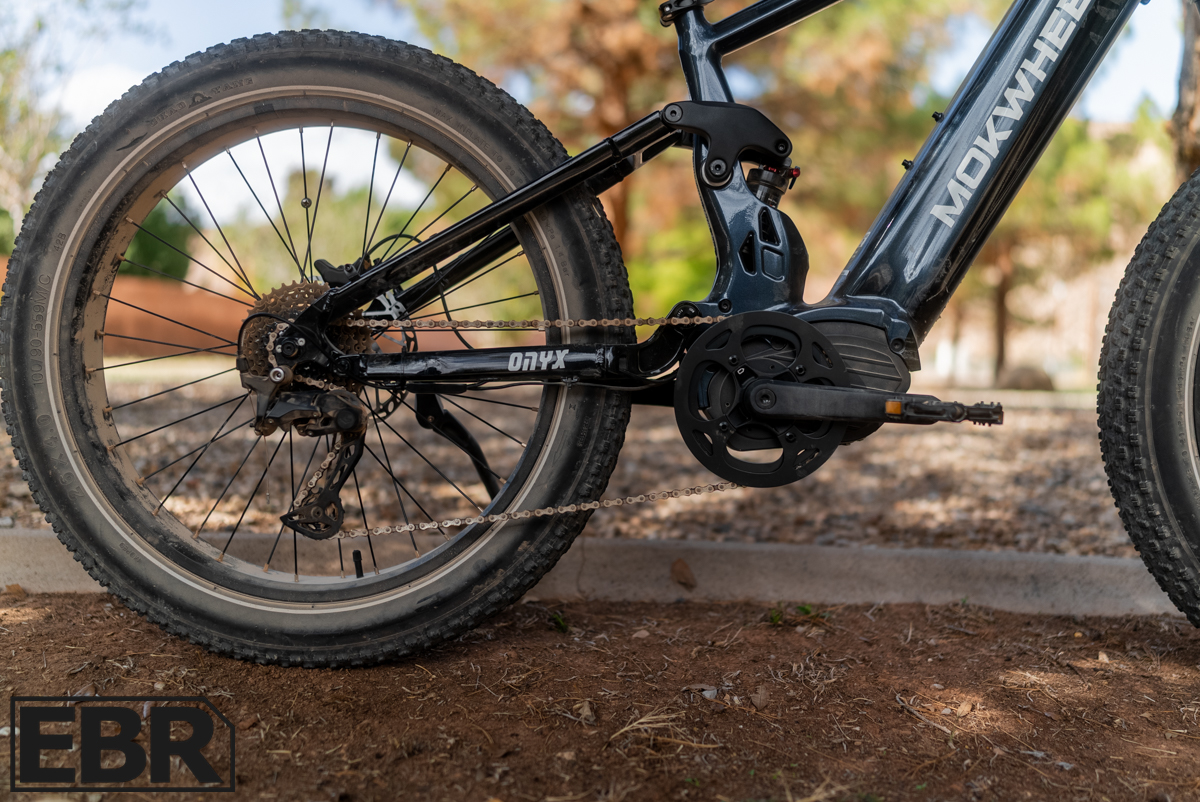
The drivetrain is where you start to see the Onyx separate itself from Mokwheel’s other fat tire offerings. It runs a 1×10 setup with Shimano’s newer CUES derailleur, which is a meaningful step up from the cheaper Tourney or Altus derailleurs we usually see on budget e-bikes. The CUES has significantly better chain retention thanks to its more robust design compared to the flimsy springs found on lower-tier shifters. The cassette runs 11-39t paired with a 44t chainring, protected by a single-sided chain guard that keeps things tidy without overdoing it.
What makes the CUES especially smart on an e-bike this powerful is the integrated shift sensing system. You’ll see the sensor mounted along the chainstays, and it works by detecting cable pull. When you shift, the sensor tells the motor to cut power for about a second, just long enough for you to make the shift safely without fighting the motor’s brutal 210Nm of torque. That’s the kind of thought that keeps drivetrains from getting shredded. That said, I did notice the sensor would occasionally cut the motor during rough offroad riding when I wasn’t actually shifting, likely from cable movement caused by impacts and bumps. It only happened occasionally, but it’s worth noting.
The cranks are 170mm aluminum and the pedals are alloy flats with traction studs and reflectors built in for visibility. Simple, functional, and they get the job done.
Braking is handled by Tektro HD 4-piston calipers with 203mm rotors front and rear. That’s a notch up from the typical 180mm/1.8mm rotors you see on most e-bikes, and the extra thickness at 2.3mm makes a real difference in stopping power and heat dissipation. The brake levers have adjustable reach too, so you can dial them in to fit your hands better. The braking feel is really solid across the board.
The Mokwheel-branded saddle is fine. Nothing special, but it’s comfortable enough and has a nice grab handle on the underside. The real innovation is in the seat post setup. The frame’s linkage hardware runs through the seat tube, which limits how much a traditional seat post can extend. Mokwheel worked around this by building in 3 inches of micro-adjust rails in the seat tube itself, then adding a hand-actuated dropper post with another 3 inches of travel. That gives you 6 inches of total adjustability, which helps dial in your fit. As a bonus, that dropper gets the saddle out of the way when you’re up out of the saddle on more aggressive rides, adding some extra utility.
The cockpit consists of a 720mm aluminum handlebar with a 31.8mm diameter for stem bite. Shimano trigger shifters handle the gear changes with a 10-speed window so you can glance down and know exactly what gear you’re in. They have that satisfying crisp click as they snap into gear. Everything feels well thought out.
The suspension tells two different stories. Up front, you get a 135mm double-crown moto-style fork with compression and preload adjustments. It looks cool and works fine, but there are some trade-offs. The double-crown design reduces your turning radius and adds weight up front, which isn’t ideal on a bike that already tips the scales at nearly 90 pounds. The fork also has a noticeable slapping sound at top-out when you catch air, caused by the coil spring under load. A more traditional MTB-style air fork with thicker stanchions (say 36 or 38mm) would manage the weight better and give a more refined feel. But as it is, the fork does its job.
The rear shock is where things get interesting. It’s an air shock with lockout and adjustable air pressure via a Schrader valve that maxes out at 275PSI. At my body weight of 180 pounds, I found 180PSI gave a really nice ride feel. The rear shock is a genuinely useful addition that punches well above its obscure brand name. Combined with the frame’s linkage setup, it delivers performance that exceeds expectations.
The front LED light is mounted and hardwired to the bike with an adjustable angle bracket, which is the right way to do it. The rear light is less impressive. It’s a battery-powered unit with a rubber strap that secures it to the seat post. It has multiple modes from flashing to solid, but I found the strap tension never quite held the light in place on rides. I eventually took it off when riding offroad because it would shift around too much to be reliable.
All told, the Onyx has a clear premium edge over Mokwheel’s other fat tire e-bikes. The Shimano CUES, the beefed up Tektro brakes, that rear air shock, the adjustable seat post solution, the thicker rotors, the double-crown fork all add up to a bike that feels more controlled and more enjoyable to ride than what you’d expect from this price point.
Screen / User Interface / App
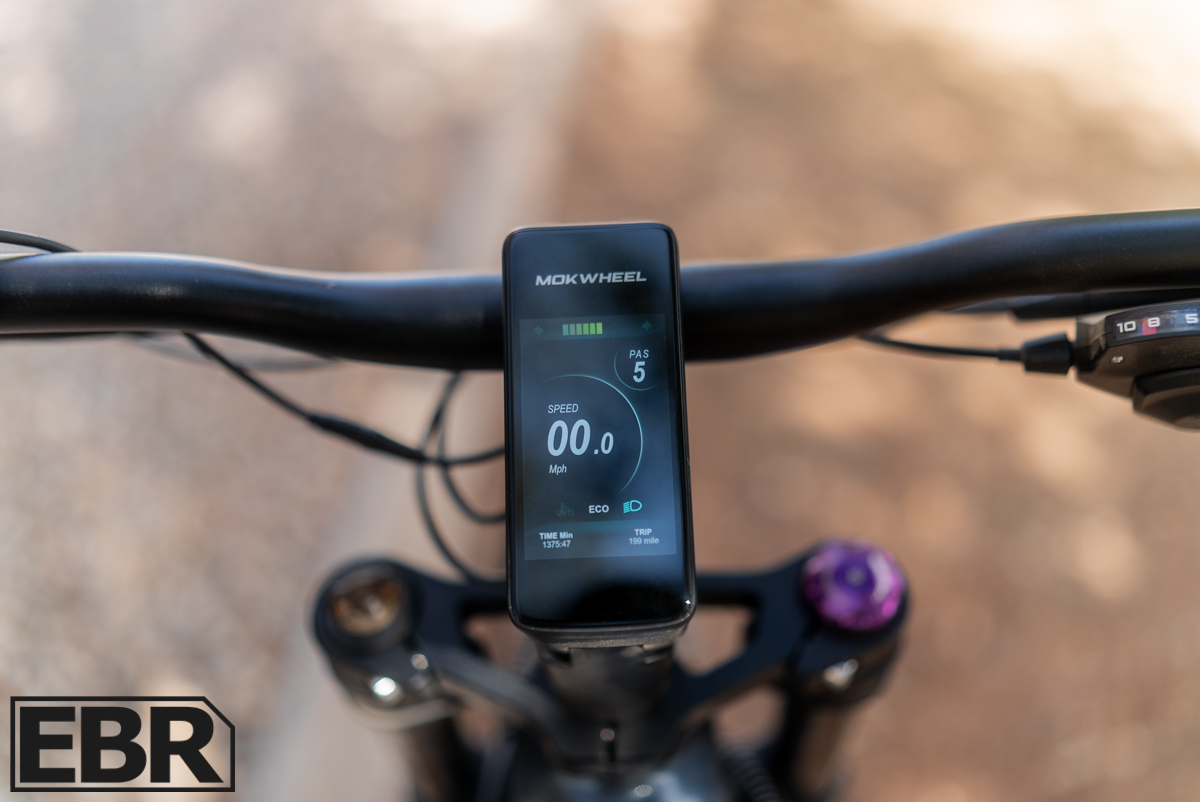
The Onyx rocks a new stem-integrated display for Mokwheel, which is a smart design choice. The display and stem are a single unit, which keeps things clean and minimalist while also giving you 40 degrees of adjustability for fit and ride comfort. The downside is that if you ever want to swap stems down the line, you’re out of luck since the display comes along for the ride. It’s a trade-off between aesthetics and modularity, but for most riders it won’t be an issue.
What I really appreciate is that Mokwheel kept the same operating system design from their other power station e-bikes. There’s no steep learning curve here. The full-color display is really clear and intuitive to navigate. The home screen shows all the essentials: speed, PAS level, battery percentage, trip meter, and odometer. Everything you need at a glance.
If you want to dig deeper, there’s a technical settings menu you can access by holding the PAS up and down buttons for 3 seconds. From there you can adjust screen brightness or set it to auto mode, change your units of measurement, and select from 6 different languages if you need them. It’s straightforward and well organized.
For everyday adjustments like speed limits and intensity settings, you access the function menu by holding the left and right arrow buttons on the control pad for 3 seconds. That menu also gets you into more advanced features like error and fault code checks, serial and firmware numbers, hardware info, and the ability to reset the display if needed. It’s more in-depth than you’d expect from an e-bike at this price point, and it shows Mokwheel put real thought into the software.
Mokwheel Onyx Model Options
One frame size fits 57 to 6’9 and comes in 3 colors, blue and black like i was sent for testing h you see in these pics, then there is a color called ‘brown gray’ but it looks a bit more purple on the website but admittingly i havent seen in person so im not entirely sure. Then finally for an extra $100 you can get jungle camo, something the hunters out there might prefer.
There is also a ST frame option that fits riders from 5’5 to 6’7 and that has a smaller max payload at 350 lbs and it comes in different colors, ‘Panda’ that’s a mix of black and white parts, then there is mint green, and finally, you can always opt for the Jungle camo as well in the ST version.
Right now fenders are included free and they are composite with a single v-shapped rod that connects on both sides of the bike in front and rear. I wasn’t a huge fan of these fenders as they often got bent out in the wrong way, got crooked and/or rubbed off road with any suspension articulation in the rear linkage. So, I just pulled them off altogether. It was nice to have open pavement but a headache off road.
In terms of optional accessories, the Onyx can be had with the same power station accessories the rest of the Mokwheel power station bike lineup does. Thats a 1000W power inverter, solar panels for charging the inverter (or the bike) and a spare batter, in-fact, all 3 come in a package right now priced around five hundred bucks, (and I don’t say this often in 2025), but that feels like a great deal considering most bike brands batteries alone around $300-500 let alone that come with a few solar panels and 1000W inverter.
And then of course you have your typical bike brand accessories like helmets, locks, bells, mirrors, that sort of stuff. Plus if you want to bring your own gear or mount those solar panels, you have the ability to mount a rear rack (also sold separately by mokwheel) and some bottle cage mounts along the down tube allow for rigging it up however you see fit.
Is The Mokwheel Onyx Worth Buying?
The Onyx is Mokwheel’s most ambitious build yet, and they largely nailed it. That 210Nm mid-drive motor delivers real climbing power that puts it ahead of hub motor competitors, and our 105-mile range test at PAS 1 proved the efficiency advantage is legitimate. The full-suspension setup works well, especially that adjustable rear air shock, and the Shimano CUES drivetrain with shift-sensing motor cutoff shows smart engineering.
The downsides are real but manageable. The dual-crown fork adds weight and limits turning radius without delivering refined performance. The shift sensor occasionally cuts power during rough riding from cable movement, and the included fenders are poorly designed for offroad use.
At $3,288, the Onyx delivers exceptional value for a mid-drive fat tire e-bike with full suspension. Add in the power station ecosystem with solar panels and 1000W inverter for around $500, and you’ve got genuine off-grid capability rarely found at this price point. If you want serious climbing power, legitimate range, and adventure-ready features, the Onyx is one of the most compelling options in this segment.

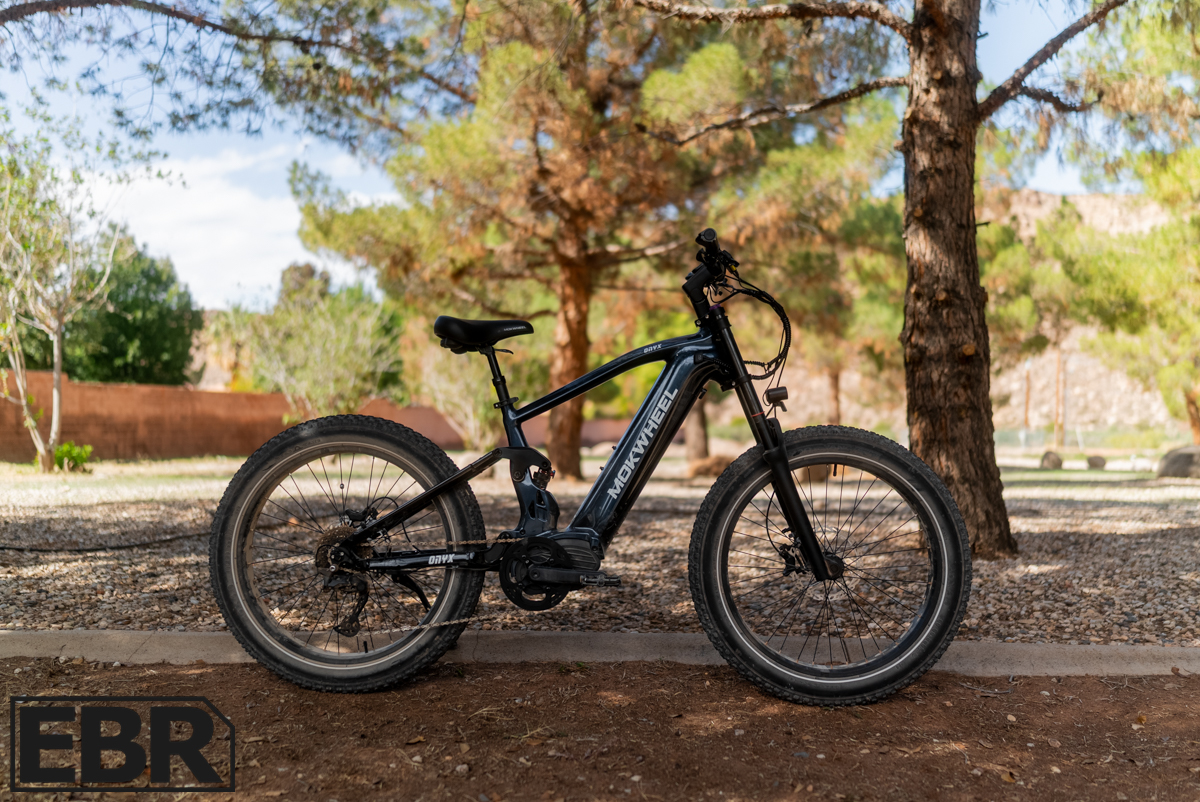


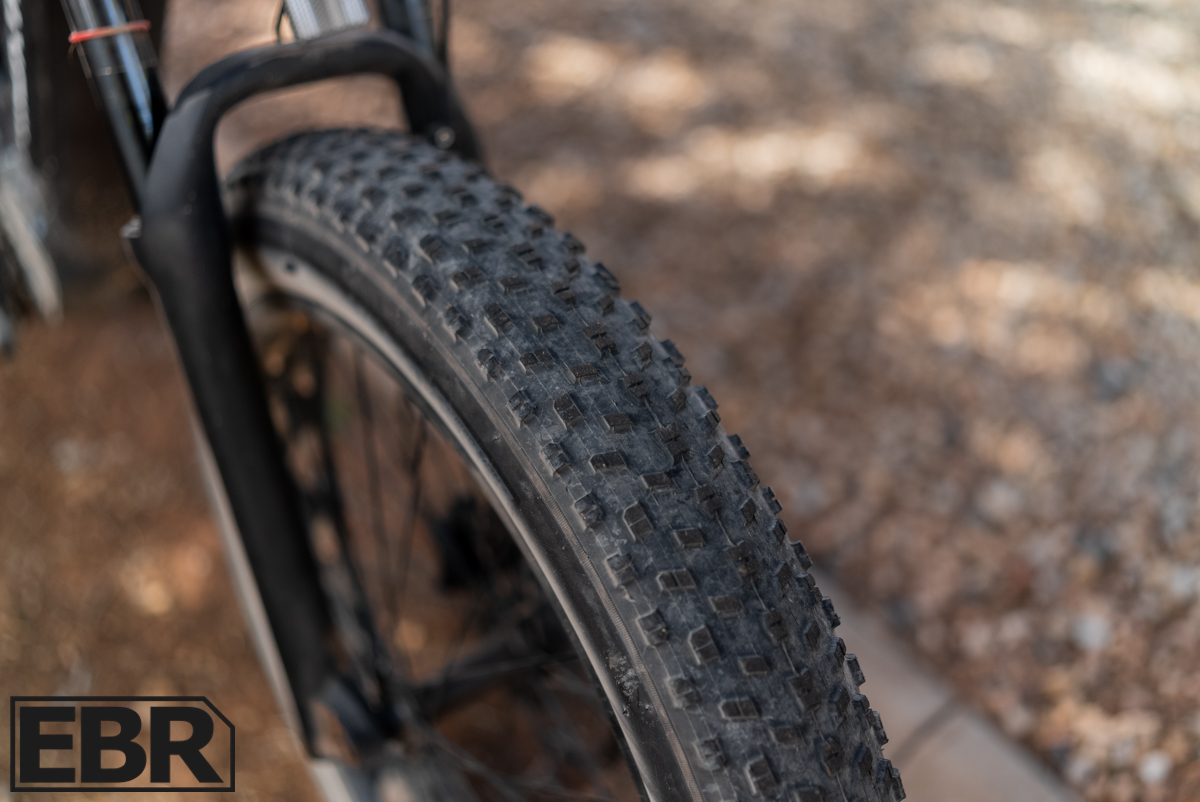
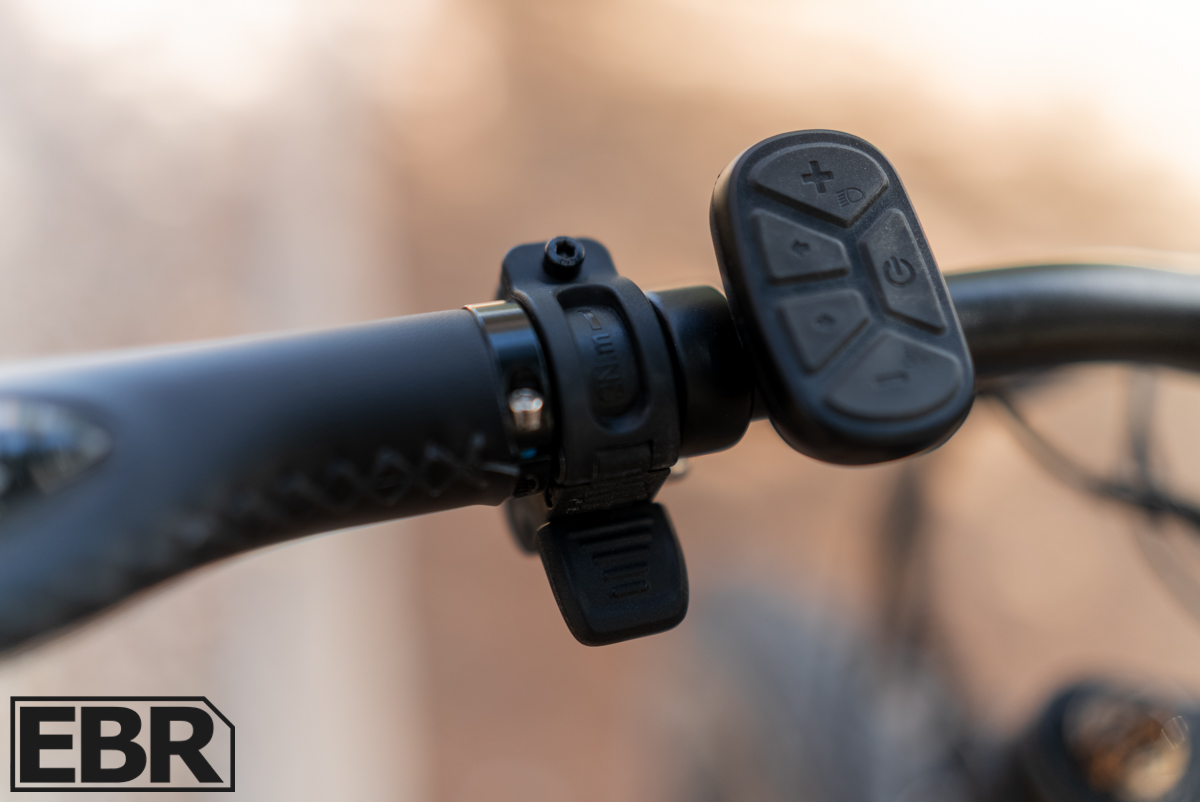
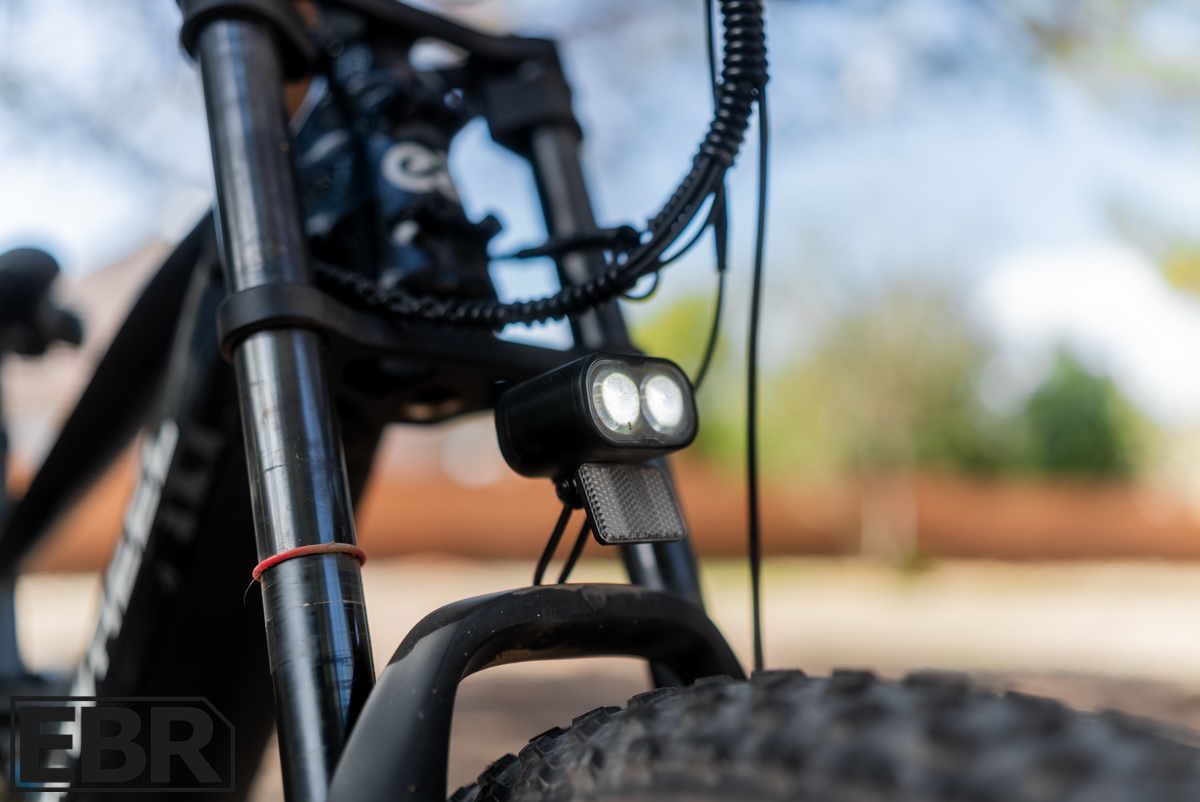


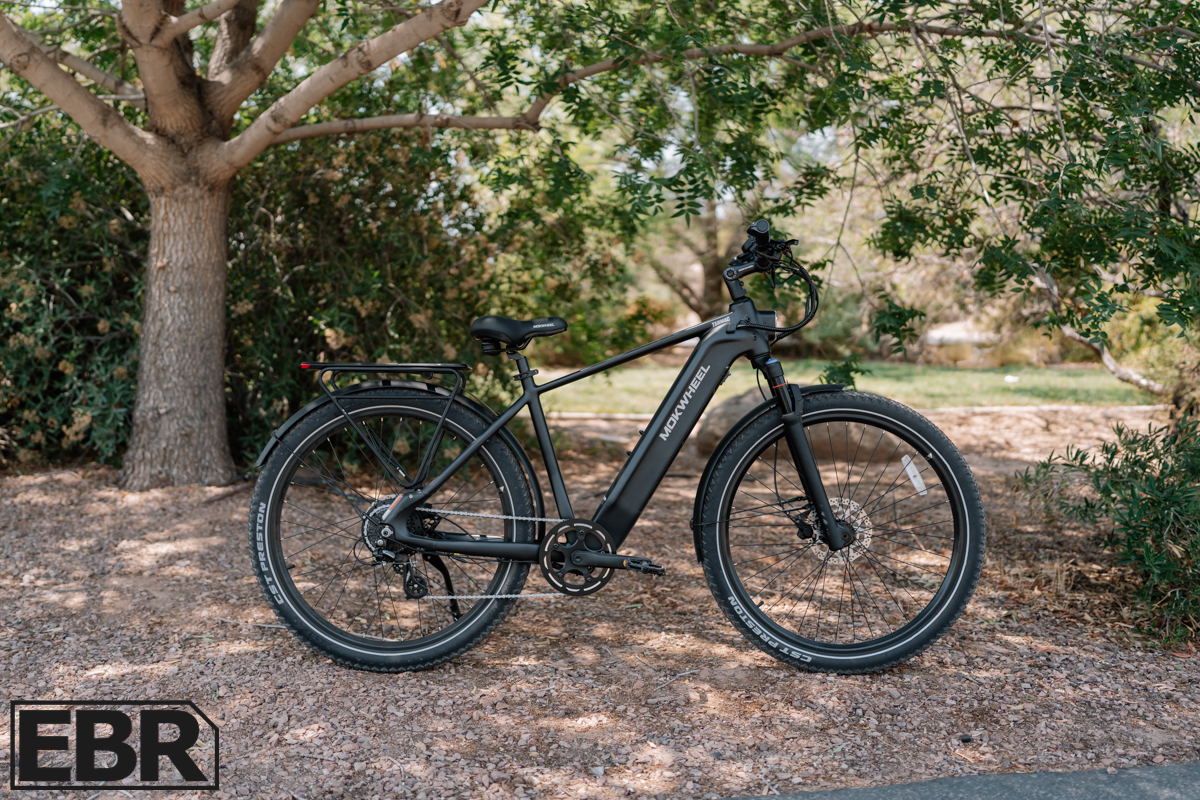
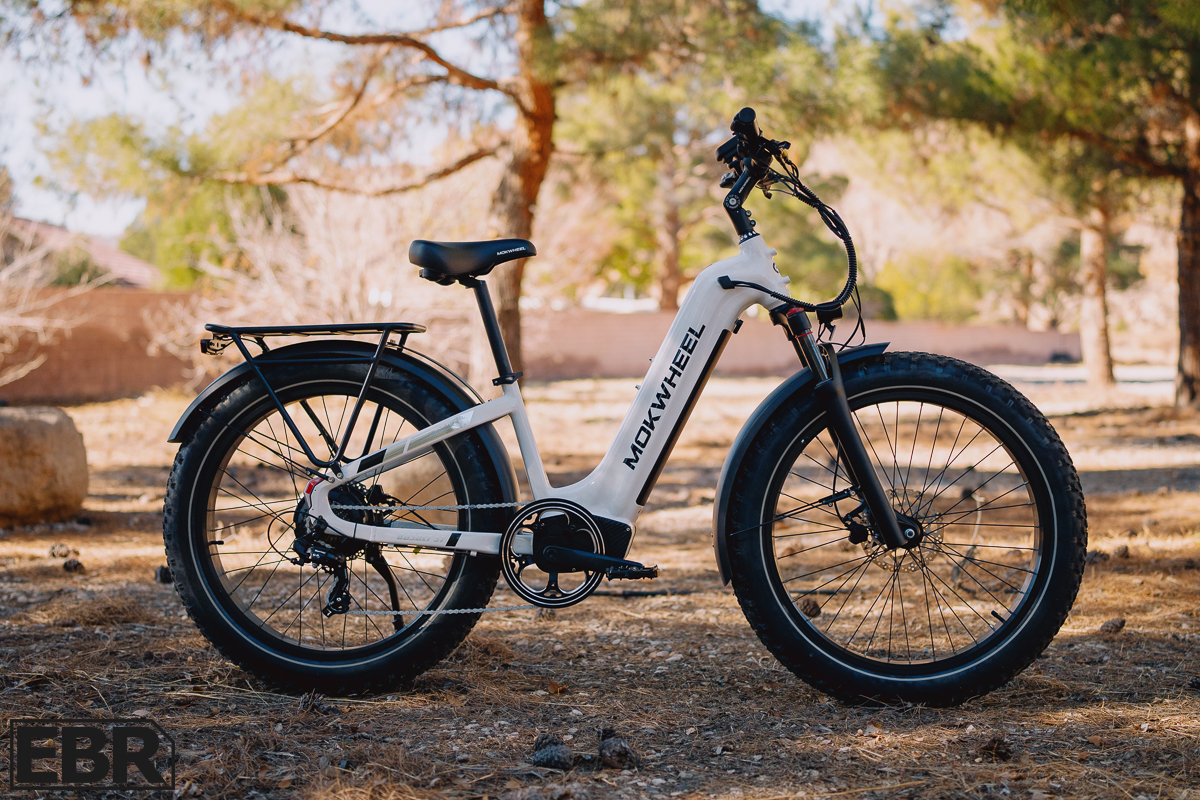
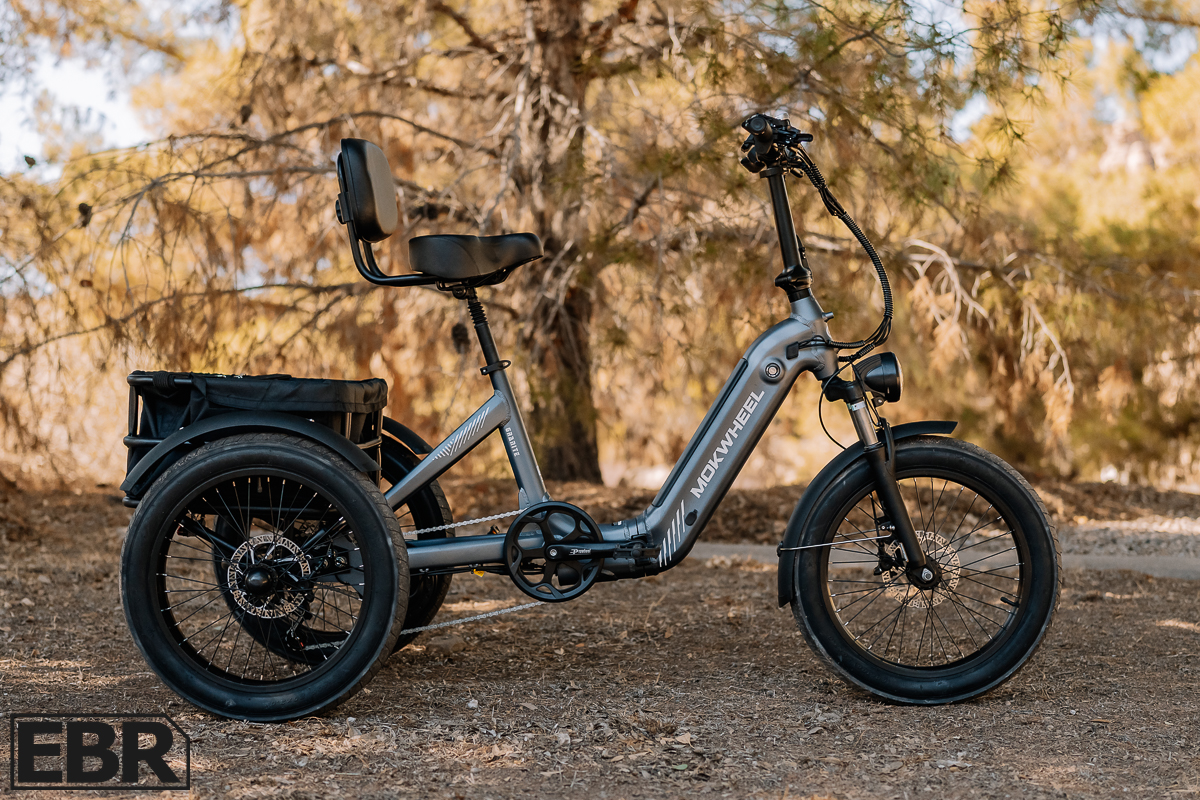


Reader Interactions